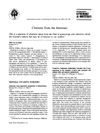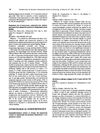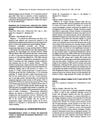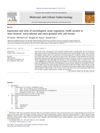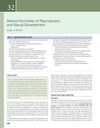Immunohistochemical Analysis of Estrogen and Progesterone Receptors in Endometrium and Peritoneal Endometriosis: A New Quantitative Method
June 1995
in “
International Journal of Gynecology & Obstetrics
”
estrogen receptors progesterone receptors endometrium endometriosis glandular cells stromal cells eutopic endometrium ectopic endometrium peritoneal endometriotic lesions late proliferative phase secretory phase menstrual cycle biopsies infertile patients laparoscopically confirmed endometriosis ER PR normal endometrium endometriotic tissue endometriotic lesions late proliferative phase secretory phase menstrual cycle
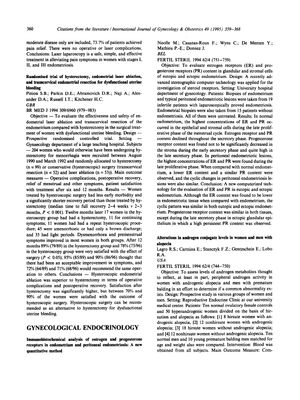
TLDR The new method showed that endometriotic tissue has lower estrogen receptor levels but similar progesterone levels compared to normal endometrium, with both following a similar cycle.
The document reports on a study that aimed to evaluate the content of estrogen receptors (ER) and progesterone receptors (PR) in glandular and stromal cells of both eutopic (normal) and ectopic (endometriotic) endometrium using a new computerized stereographic technology. The study included biopsies from 19 infertile patients with laparoscopically confirmed endometriosis and 15 patients without endometriosis. The results showed that in normal endometrium, the highest concentrations of ER and PR were during the late proliferative phase of the menstrual cycle, with a decline throughout the secretory phase. In peritoneal endometriotic lesions, the highest concentrations of ER and PR were also during the late proliferative phase, but with a lower ER content compared to normal endometrium, while PR content was similar in both tissues. The study concluded that although ER content was lower in endometriotic tissue, the cyclic pattern of ER and PR was similar in both eutopic and ectopic endometrium, with the exception of a high persistent PR content in ectopic glandular epithelium during the late secretory phase.
